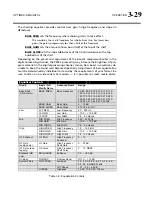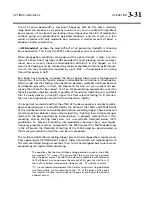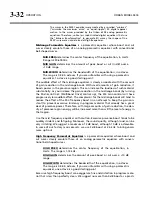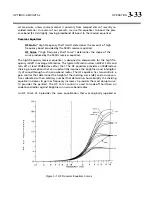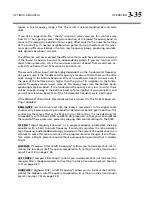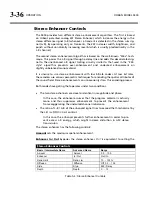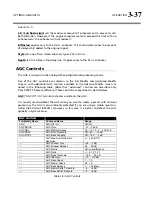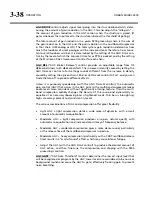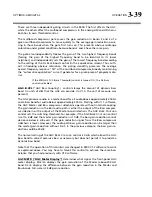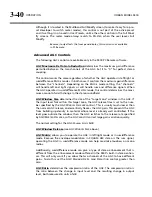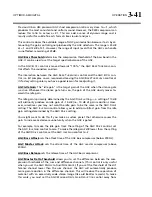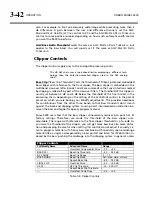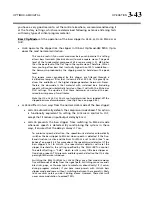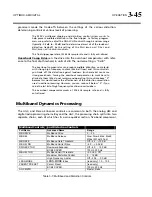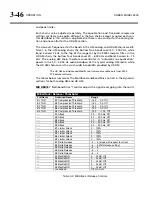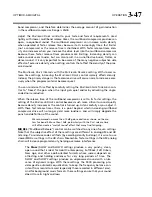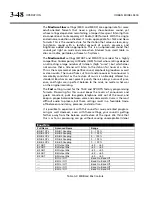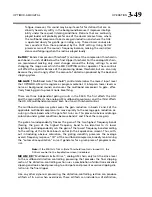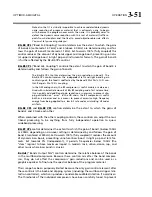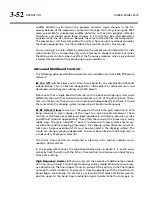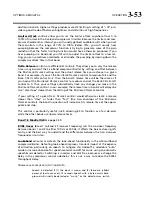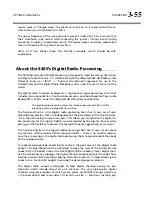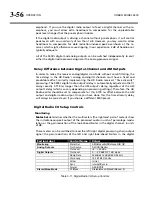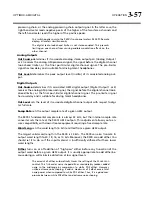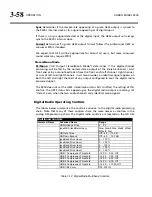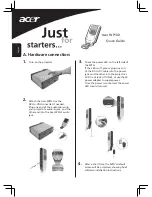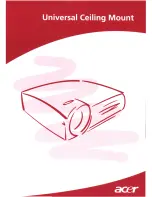
OPTIMOD-AM DIGITAL
OPERATION
3-43
you have a very good reason to set the control elsewhere, we recommend leaving it
at the factory settings, which were determined following extensive listening tests
with many types of critical program material.
Bass Clip Mode
sets the operation of the bass clipper to
H
ARD
,
LL
H
ARD
,
M
EDIUM
, or
S
OFT
.
H
ARD
operates the clipper like the clipper in Orban’s Optimod-AM 9200. It pro-
duces the most harmonic distortion.
This can be useful if you want maximum bass punch because this setting
allows bass transients (like kick drums) to make square waves. The peak
level of the fundamental component of a square wave is 2.1 dB
higher
than the peak level of the flat top in the square wave. Therefore, this al-
lows you to get low bass that is actually higher than 100% modulation—
the harmonics produced by the clipping work to hold down the peak
level.
The square waves produced by this clipper are filtered through a
6 dB/octave lowpass filter that is down 3 dB at 400 Hz. This greatly re-
duces the audibility of the higher clipper-generated harmonics. Never-
theless, the downside is that material with sustained bass (including
speech) will sound substantially less clean than it will with the
M
EDIUM
or
S
OFT
settings. The upside is that these harmonics can extend the per-
ceived bass response of small radios.
Note that the
H
ARD
C
LIP
S
HAPE
control determines how squared-off the
clipped bass waveforms become. (See
Clip Shape
on page 3-44.)
LLH
ARD
differs in two ways from the normal
H
ARD
mode of the bass clipper:
LLH
ARD
automatically defeats the compressor lookahead. This action
is functionally equivalent to setting the
L
OOKAHEAD
control to
O
UT
,
except that it reduces input/output delay by 5 ms).
LLH
ARD
prevents the bass clipper from switching to
M
EDIUM
mode
whenever speech is detected. By constraining the system in these
ways, it ensures that the delay is always 17 ms.
To minimize speech distortion, the speech/music detector automatically
switches the bass clipper to
M
EDIUM
when speech is detected if the Five-
Band structure is active and the
B
ASS
C
LIP
M
ODE
is set to
H
ARD
. (See “Loo-
kahead” on page 3-53 for more about the speech/music detector.) If the
bass clipper is set to
LLH
ARD
, the speech/music detector will reset the
clipper threshold to the setting specified by the
S
PEECH
BCT
HR
control.
The default setting is “0 dB,” which results in very little bass clipper ac-
tion during speech. This prevents audible speech distortion that this clip-
per might otherwise introduce.
Switching the
B
ASS
C
LIP
M
ODE
to
LLH
ARD
(from any other mode) removes
five milliseconds of delay from the signal path. Switching can cause audi-
ble clicks, pops, or thumps (due to waveform discontinuity) if it occurs
during program material. If you have some presets with
LLH
ARD
bass
clipper mode and some without, switching between these presets is likely
to cause clicks unless you do it during silence. However, these clicks will
never cause modulation to exceed 100%.
Summary of Contents for Optimod-AM 9400
Page 1: ...Operating Manual OPTIMOD AM 9400 Digital Audio Processor Version 1 2 Software...
Page 7: ...Operating Manual OPTIMOD AM 9400 Digital Audio Processor Version 1 2 Software...
Page 52: ......
Page 204: ......
Page 232: ......
Page 260: ......
Page 261: ...OPTIMOD AM DIGITAL TECHNICAL DATA 6 29...
Page 267: ...OPTIMOD AM DIGITAL TECHNICAL DATA 6 35 CPU Module...
Page 273: ...OPTIMOD AM DIGITAL TECHNICAL DATA 6 41 RS232 BOARD PARTS LOCATOR...
Page 275: ...OPTIMOD AM DIGITAL TECHNICAL DATA 6 43 8300 POWER SUPPLY PARTS LOCATOR...
Page 284: ...6 52 TECHNICAL DATA ORBAN MODEL 9400 DSP BOARD PARTS LOCATOR DRAWING 32170 000 14...
Page 292: ...6 60 TECHNICAL DATA ORBAN MODEL 9400 DISPLAY BOARD PARTS LOCATOR...
Page 293: ...OPTIMOD AM DIGITAL TECHNICAL DATA 6 61 DISPLAY BOARD...

